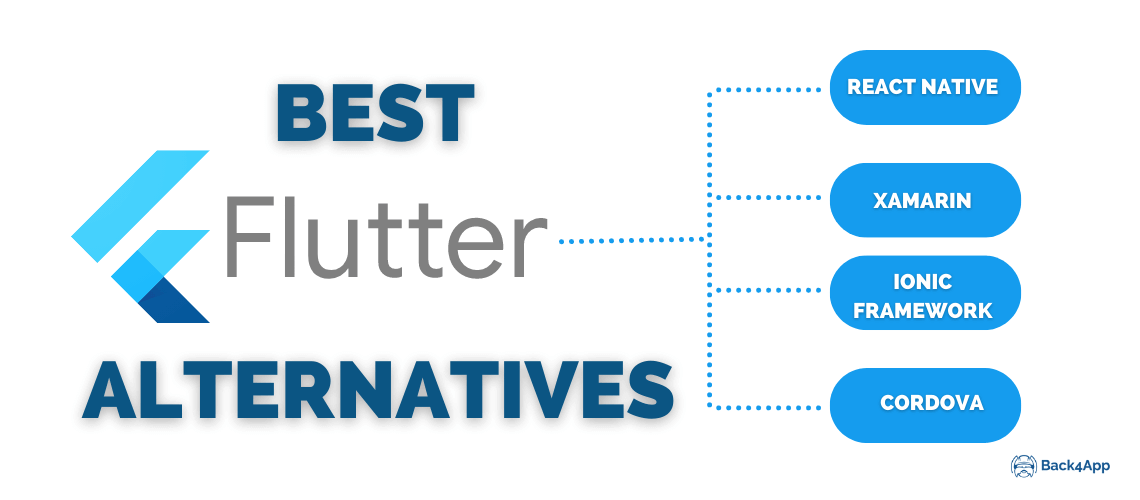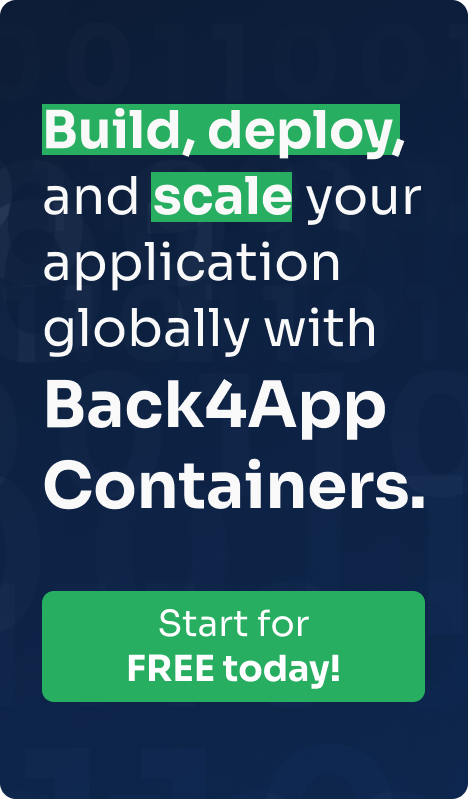Flutter Alternatives | A Comprehensive Comparison

In recent years, cross-platform app development has gained significant popularity. It is mainly because of its ability to streamline the development process and reach a wider audience. However, having the right tools and frameworks can make a significant difference.
Flutter has emerged as a popular choice for cross-platform mobile app development. However, developers are always on the lookout for alternatives that can offer similar benefits and cater to their specific needs.
Therefore, it has become essential to explore other alternatives that can cater to specific project requirements.
Here in this article, we will delve into the top four alternatives to Flutter and analyze their strengths and weaknesses.
Contents
A Brief Overview of Flutter
Flutter is a popular open-source framework for building cross-platform applications. It offers a range of features and benefits that make it an attractive choice for developers.
Additionally, Flutter follows a layered architecture model that consists of several components working together to create robust applications.
The layers include the foundation library, framework, and engine. These layers work together to provide the necessary tools and functionalities for app development.
Moreover, Flutter emphasizes the concept of reactive user interfaces where changes in the application state trigger updates to the user interface. This approach also allows for efficient and responsive UI development.
Additionally, its architecture, hot reload feature, rich widget system, and vibrant ecosystem make it a popular choice among developers.
With Flutter, developers can build high-performance, visually appealing, and cost-effective applications for multiple platforms.
Please check the article Step-by-step guide to build a Flutter application to learn more about this subject.
The best Alternatives to Flutter you need to know
Despite all the amazingness, developers sometimes need to find some alternatives to Flutter for added benefits. Therefore, here we have brought some best Flutter competitors you must know.
React Native
React Native is a robust framework that was developed by Facebook. It allows developers to develop mobile applications by using JS.
The vast library of React Native offers tons of pre-built components which makes user-interface development a breeze.
React Native’s main advantage lies in its ability to share code between platforms, which significantly reduces development time and effort.
React Native allows developers to see instant changes during the development process without the need for a full app reload.
Pros
- Extensive community support and a wide range of third-party libraries.
- Remarkable performance, thanks to its native rendering capabilities.
- The hot reloading feature enables developers to see instant changes during the development process.
- Robust developer tools and excellent debugging capabilities.
Cons
- It offers limited access to native device features. In fact, it requires additional modules or custom native code for specific functionality.
- The learning curve can be steep for developers new to JavaScript or React.
Xamarin
Developed by Microsoft, Xamarin is a powerful framework. It allows developers to build native apps for iOS, Android, and Windows using a single codebase written in C#.
It also provides a comprehensive set of tools and libraries. Consequently, it helps in empowering developers to create high-performance applications.
Xamarin allows developers to access platform-specific APIs and native UI controls, resulting in high-performance applications.
It also enables developers to share code across multiple platforms, reducing development time and effort.
Pros
- It offers seamless integration with existing .NET libraries and APIs.
- Xamarin also provides access to platform-specific APIs and native UI controls.
- Additionally, it offers the ability to share code across multiple platforms, reducing development time and effort.
- Excellent support for testing and debugging also makes Xamarin an amazing Flutter alternative.
Cons
- Limited community support compared to other frameworks.
- Larger app size due to the inclusion of the Mono runtime.
- Some platform-specific features may require additional customization.
Ionic Framework
Ionic Framework is an open-source framework for building hybrid mobile applications. It helps in hybrid app development using web technologies like HTML, CSS, and JavaScript.
It also leverages popular web frameworks like Angular and React to create native-like experiences across multiple platforms.
Above all, the Ionic Framework enables developers to create cross-platform apps that run smoothly on iOS, Android, and the web. Ionic offers a wide range of customizable UI components.
Due to this, it becomes easier to create visually appealing apps. Overall, Ionic is an ideal choice for developers who prefer web-based technologies and seamless code sharing.
Pros
- Ionic Framework offers a wide range of pre-built UI components, making app development faster and easier.
- Additionally, it provides seamless integration with popular web frameworks like Angular and React.
- An extensive community is also here to support, and a vast library of plugins makes the Ionic Framework worth considering.
- Easy access to device functionalities using Cordova plugins.
Cons
- Performance can be a concern, especially for complex or resource-intensive applications.
- Some UI components may not render consistently across different platforms.
Cordova
Cordova is an open-source framework that allows developers to create mobile apps using web technologies.
It wraps the app’s HTML, CSS, and JavaScript code into a native container, providing access to device features through plugins.
Cordova also supports multiple platforms, including iOS, Android, and Windows. Due to this, it is a versatile choice for cross-platform development.
While Cordova may not offer the same level of performance as native frameworks, it excels in rapid prototyping and developing simple applications.
It provides a bridge between web applications and native device functionalities, enabling developers to access device features like geolocation, camera, and accelerometer.
Pros
- Ability to leverage existing web development skills and frameworks.
- A wide range of plugins is available for accessing native device features.
- Cross-platform compatibility allows developers to target multiple platforms with a single codebase.
- Active community support and regular updates.
Cons
- UI may not feel as native compared to frameworks like React Native or Xamarin.
- It offers Limited access to native device features compared to truly native frameworks.
Conclusion
While Flutter offers a robust and feature-rich framework for cross-platform app development, it’s important to consider alternatives that may better suit specific project requirements.
Here, we have enlisted the best of Flutter alternatives. All have their strengths and weaknesses, making them viable options for the development team’s skillset, project scope, and performance needs.
Certainly, developers can make informed decisions and craft exceptional mobile applications by exploring these Flutter alternatives.



